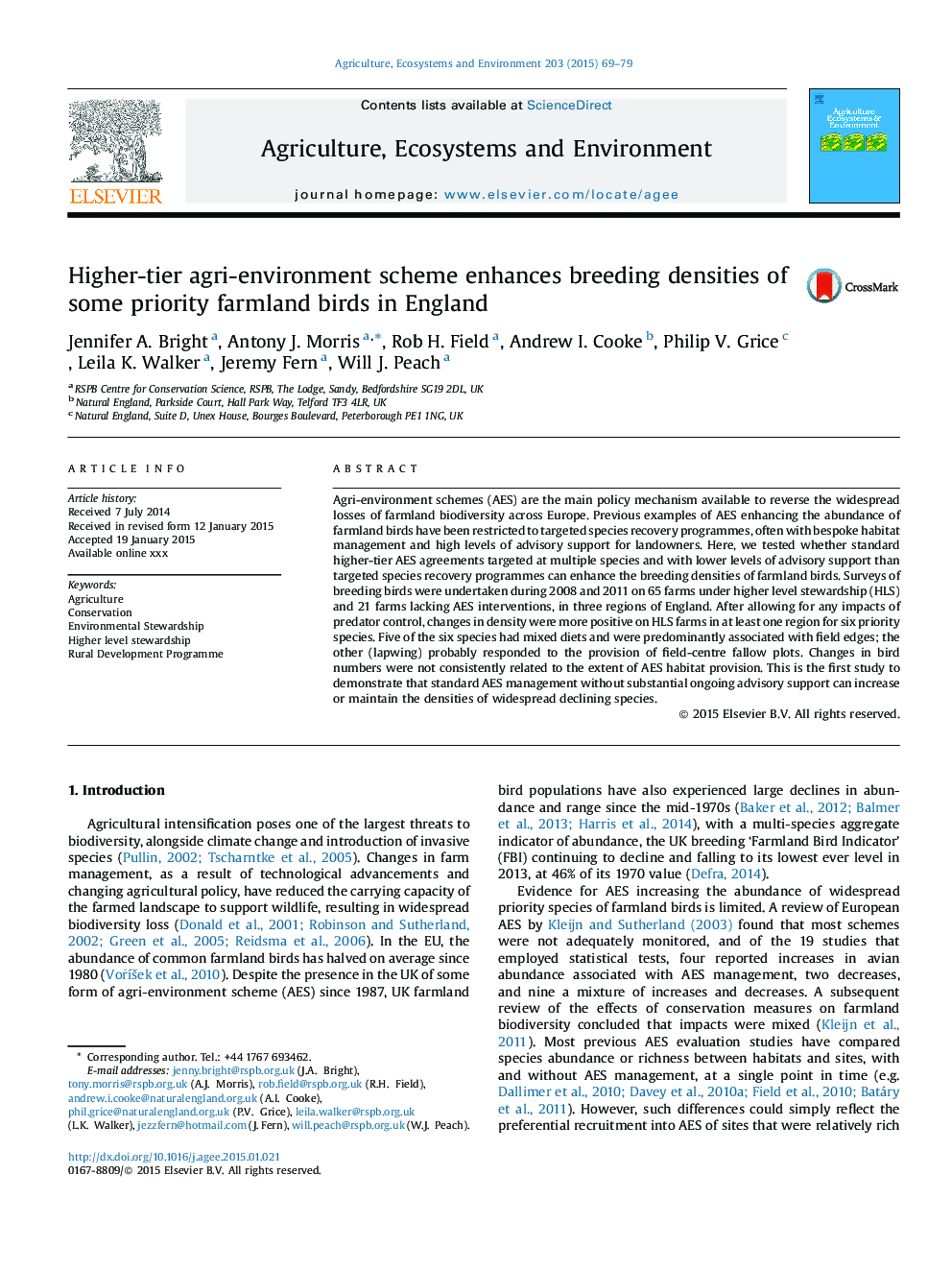| Article ID | Journal | Published Year | Pages | File Type |
|---|---|---|---|---|
| 8487765 | Agriculture, Ecosystems & Environment | 2015 | 11 Pages |
Abstract
Agri-environment schemes (AES) are the main policy mechanism available to reverse the widespread losses of farmland biodiversity across Europe. Previous examples of AES enhancing the abundance of farmland birds have been restricted to targeted species recovery programmes, often with bespoke habitat management and high levels of advisory support for landowners. Here, we tested whether standard higher-tier AES agreements targeted at multiple species and with lower levels of advisory support than targeted species recovery programmes can enhance the breeding densities of farmland birds. Surveys of breeding birds were undertaken during 2008 and 2011 on 65 farms under higher level stewardship (HLS) and 21 farms lacking AES interventions, in three regions of England. After allowing for any impacts of predator control, changes in density were more positive on HLS farms in at least one region for six priority species. Five of the six species had mixed diets and were predominantly associated with field edges; the other (lapwing) probably responded to the provision of field-centre fallow plots. Changes in bird numbers were not consistently related to the extent of AES habitat provision. This is the first study to demonstrate that standard AES management without substantial ongoing advisory support can increase or maintain the densities of widespread declining species.
Related Topics
Life Sciences
Agricultural and Biological Sciences
Agronomy and Crop Science
Authors
Jennifer A. Bright, Antony J. Morris, Rob H. Field, Andrew I. Cooke, Philip V. Grice, Leila K. Walker, Jeremy Fern, Will J. Peach,
